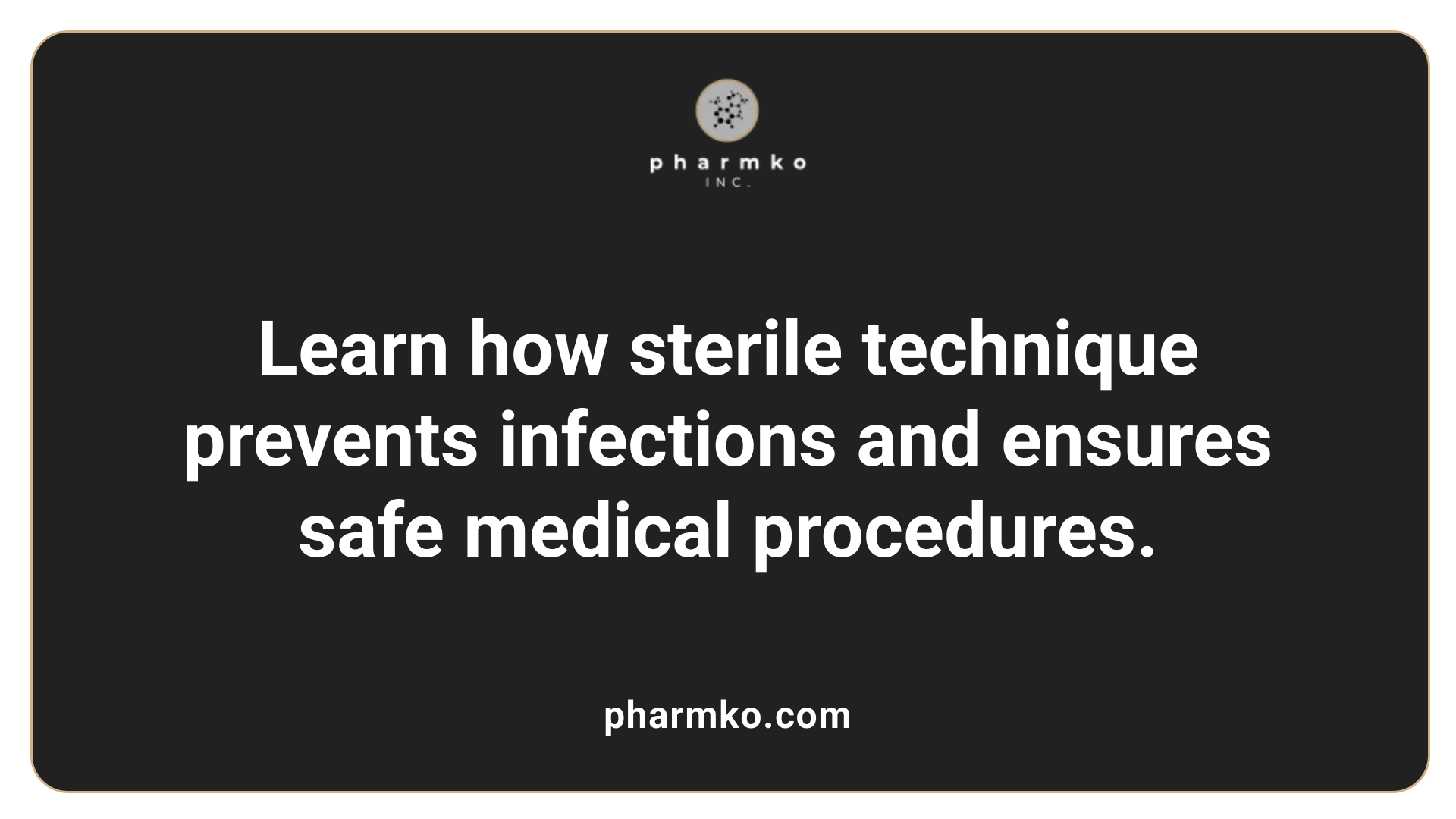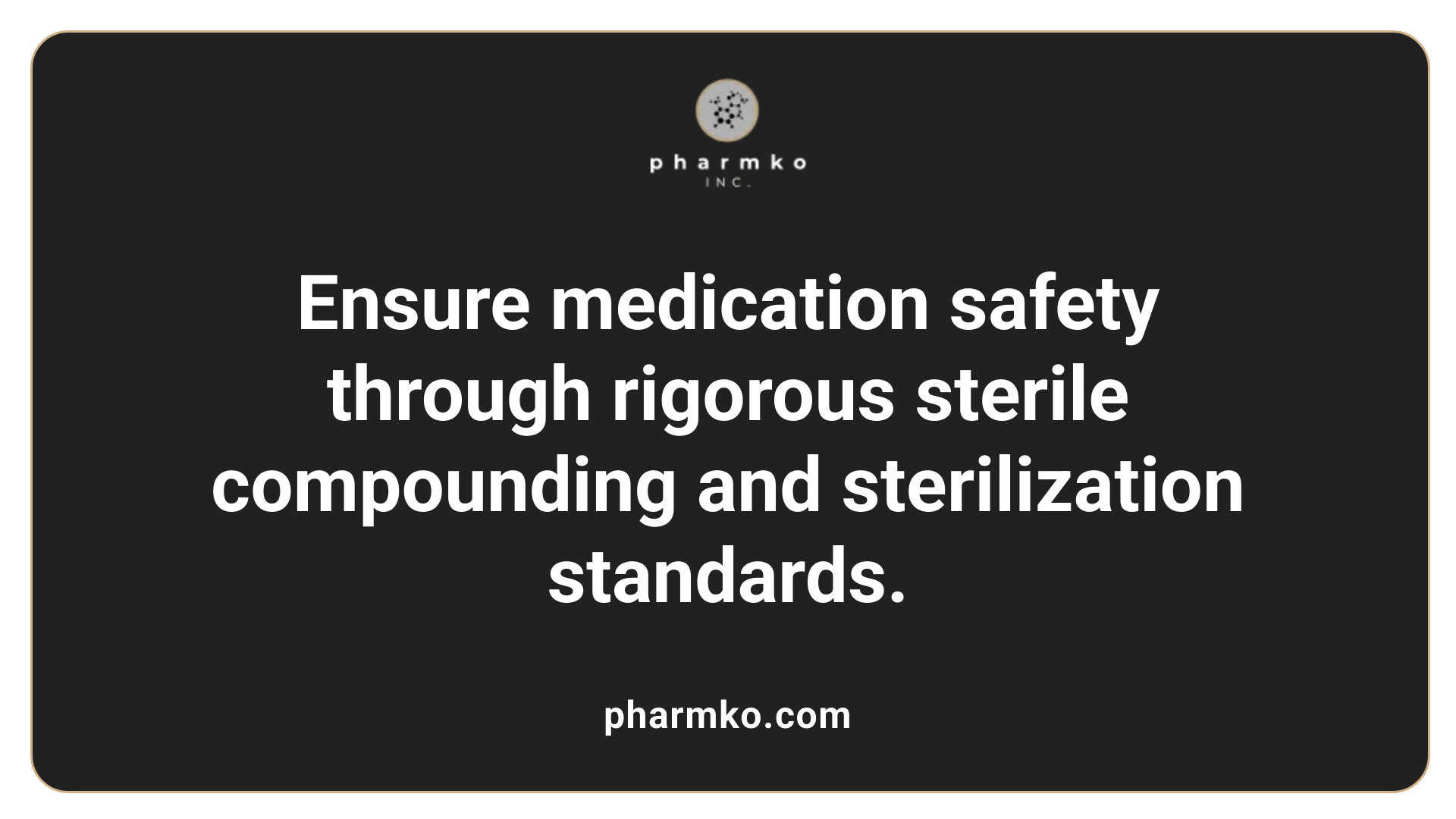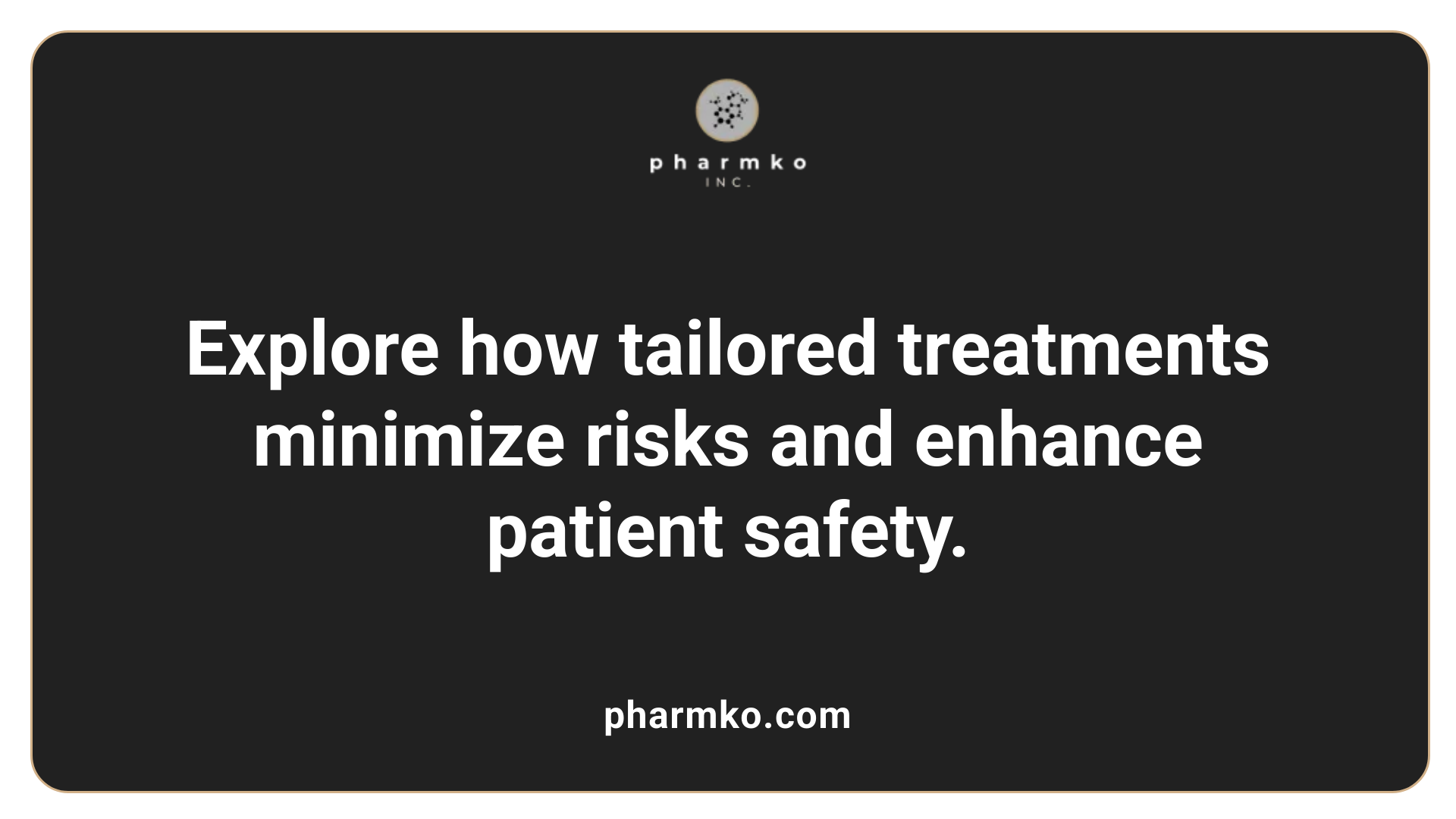What are the benefits of tailored sterile treatments?
Introduction to Tailored Sterile Treatments
The evolution of healthcare continuously emphasizes precision and personalization, especially in sterile treatments. Customizing medical procedures to align with individual patient profiles not only enhances safety and efficacy but also revolutionizes treatment outcomes across various disciplines. From wound care to fertility interventions, tailored sterile treatments represent a significant leap toward more effective and safer healthcare practices.
The Critical Role of Sterile Processing in Healthcare Safety

What are the benefits of sterile processing in healthcare?
Sterile processing is fundamental to patient safety in healthcare settings. It involves the cleaning, sterilizing, and proper handling of surgical and medical instruments to prevent infections. By ensuring that all tools used in procedures are free from bacteria, viruses, and other contaminants, sterile processing significantly reduces the risk of healthcare-associated infections (HAIs).
This not only leads to better outcomes for patients but also minimizes the chances of complications such as systemic infections or prolonged recovery times. Hospitals and clinics that prioritize strict sterilization standards create a safer environment for everyone.
The profession offers advantages for those entering the field. Certification programs or associate degrees provide a quick pathway to employment, often with shift flexibility that suits various lifestyles. As professionals gain experience, opportunities for career advancement into supervisory or managerial roles become available.
However, working in sterile processing can be physically demanding, requiring attention to detail and adherence to rigorous safety protocols. The responsibilities include managing complex sterilization equipment and maintaining a sterile environment, which can be stressful. Despite these challenges, the importance of sterile processing in preventing infections and safeguarding health cannot be overstated.
Overall, sterile processing is a crucial component of healthcare that directly impacts patient outcomes and overall safety standards.
| Aspect | Details | Additional Notes |
|---|---|---|
| Importance | Ensures sterilization of instruments | Reduces infection risks |
| Benefits | Protects patient safety, improves outcomes | Supports effective procedures |
| Career Path | Certification, associate degrees | Opportunities for growth |
| Challenges | Physical demands, strict protocols | High responsibility |
Enhancing sterile processing practices aligns with industry standards and continuous efforts to improve infection control and healthcare safety.
The Benefits of Proper Sterile Technique in Medical Procedures

What are the benefits of sterile technique?
Implementing proper sterile technique in medical settings offers numerous vital advantages. It primarily helps in reducing the transmission of harmful microbes from healthcare providers or contaminated environments to patients. This reduction significantly decreases the risk of surgical site infections (SSIs) and other invasive procedure-related infections.
Establishing a sterile field requires meticulous practices such as thorough hand hygiene, wearing sterile gloves and gowns, and using sterile drapes. These steps create a barrier against bacteria and other pathogens, providing an environment where procedures can be performed safely.
Moreover, maintaining strict sterile protocols promotes a culture focused on safety and quality care. Healthcare teams that consistently adhere to these practices are more likely to achieve better patient outcomes, reduce complication rates, and foster trust.
Overall, the application of sterile technique is essential not only for protecting individual patients but also for upholding high standards of healthcare safety and effectiveness. By preventing infections and supporting positive recovery experiences, sterile procedures remain a cornerstone of safe medical practice.
The consistent use of sterile techniques in surgery and other invasive procedures thus underpins both patient safety and the overall quality of healthcare delivery.
The Significance of Sterile Compounding and Sterilization Practices
 Sterile compounding and proper sterilization practices play a crucial role in safeguarding patient health by preventing microbial contamination of medications. These practices ensure that treatments remain effective and free from harmful pathogens that could cause infections.
Sterile compounding and proper sterilization practices play a crucial role in safeguarding patient health by preventing microbial contamination of medications. These practices ensure that treatments remain effective and free from harmful pathogens that could cause infections.
Maintaining a sterile environment involves thorough cleaning, disinfection, and validation of sterilization methods. Regular monitoring through biological and chemical indicators confirms the effectiveness of sterilization processes, helping to identify any failures or contamination risks early.
Environmental controls are vital components of sterile compounding. These include controlled air quality with laminar flow hoods, proper surface sterilization, and controlled temperature and humidity levels in cleanroom settings. Staff training on aseptic techniques and adherence to safety protocols further reduce contamination chances.
Guidelines like USP <797> provide standardized procedures for sterile compounding, emphasizing the importance of quality assurance, environmental monitoring, and personnel competency. Strict compliance with these standards minimizes infection risks associated with compounded medications, especially for vulnerable patient populations.
In summary, rigorous sterilization practices combined with ongoing validation and personnel education are essential in maintaining the integrity of sterile preparations. These measures protect patients from the serious health threats posed by contaminated medications, ensuring safety and confidence in pharmaceutical care.
The Impact of Personalized and Tailored Healthcare Strategies
 Personalized care plays a crucial role in modern healthcare by customizing prevention and treatment plans to meet each patient's unique profile. This approach uses genetic testing, comprehensive patient profiling, and risk stratification methods to better understand individual health risks and needs.
Personalized care plays a crucial role in modern healthcare by customizing prevention and treatment plans to meet each patient's unique profile. This approach uses genetic testing, comprehensive patient profiling, and risk stratification methods to better understand individual health risks and needs.
Genetic tests—conducted via blood, saliva, or tumor biopsies—help identify specific genetic markers that influence disease development and treatment response. These insights enable healthcare providers to develop targeted therapies, especially in complex fields like cancer treatment, where matching drugs to a patient’s genetic makeup can improve success rates and reduce side effects.
Patient profiling involves assessing biopsychosocial factors, such as lifestyle, environment, and personal health history, to classify patients into subgroups with similar care needs. Techniques like growth mixture modeling and machine learning support this process, helping clinicians create more precise treatment strategies.
Risk stratification further refines care by identifying those at higher risk for certain conditions, allowing for customized prevention efforts. These personalized plans include adjusting medication doses, selecting suitable reproductive techniques, or implementing specific lifestyle interventions.
The benefits of personalized medicine extend beyond treatment efficacy to enhance safety and patient satisfaction. For example, tailored hormone therapies in women reduce adverse effects, alleviate menopausal symptoms, and help prevent chronic illnesses like osteoporosis and heart disease.
In reproductive health, fertility treatments such as IVF are increasingly personalized. They involve genetic testing, hormone profiling, and tailored protocols to improve success rates for individuals with various reproductive challenges. This personalization minimizes physical and emotional stress and leads to better health outcomes.
Research initiatives, such as Dutch projects for managing diabetes and joint replacements, demonstrate the value of patient profiling in creating more effective, resource-efficient healthcare. These efforts exemplify how stratifying patients based on detailed characteristics supports precision medicine.
Overall, integrating genetic insights, patient profiling, and risk stratification into healthcare leads to more effective, safer, and satisfying patient experiences. As technology advances, personalized care continues to evolve, promising a future where every patient receives tailored interventions that maximize health and well-being.
The Role of Tailored Treatments in Reducing Risks and Ensuring Patient Safety

How do tailored treatments reduce risks and enhance patient safety?
Customized approaches to medical care significantly lower the chances of adverse reactions and errors by precisely matching interventions to each patient's unique characteristics. For example, in fertility treatments, genetic testing helps identify specific needs, resulting in more effective and safer protocols. In hormone therapy, adjustments based on individual hormone levels and genetics can reduce side effects like blood clots or cardiovascular risks.
Systematic safety measures are equally vital. Healthcare providers employ clinical guidelines, safety protocols, and continuous quality improvement strategies such as Six Sigma and Plan-Do-Study-Act (PDSA) cycles. These methods detect potential hazards and help in refining care processes to minimize errors.
Technology plays a crucial role in maintaining safety. Electronic health records (EHRs) streamline information sharing, while decision support tools assist clinicians in making precise, evidence-based choices. This reduces mistakes like incorrect medication dosages or missed diagnoses.
Interdisciplinary collaboration enhances safety by involving diverse experts—nurses, pharmacists, specialists—in patient care planning and monitoring. Regular staff training and fostering a culture of safety foster vigilance and ongoing learning.
Patients and their families are also active partners, participating in safety planning and decision-making, which improves adherence and understanding of treatment risks.
Overall, integrating personalized medicine with systemic safety measures and advanced technology creates a robust framework that reduces risks and upholds high standards of patient safety.
Summary and Future Perspectives on Tailored Sterile Treatments
Embracing personalized and sterile treatment paradigms signifies a transformative approach in modern healthcare. These strategies not only enhance treatment effectiveness, reduce risks, and improve safety but also foster a more patient-centered healthcare environment. As research advances and technological innovations continue, the integration of personalized medicine and sterile practices promises to deliver even greater improvements in health outcomes, surgical success, and overall patient well-being. The future of healthcare lies in precision, safety, and tailored interventions—an approach that places individual needs at the forefront of medical care.
References
- What Can Tailored Medicine Do for You? - WebMD
- Assisted Reproduction: the importance of customized treatment
- Tailoring Treatment: The Personalization Of Hormone Therapy
- What are the benefits of sterilization? - Planned Parenthood
- 7 Ways That IVF Benefits Infertile Couples - NCFMC
- Tailored Healthcare: Two Perspectives on the Development and ...
- The Benefits of Obtaining a Sterile Compounding Certification Near ...
- Sterile injectable therapies: Changing delivery formats ... - Patheon













